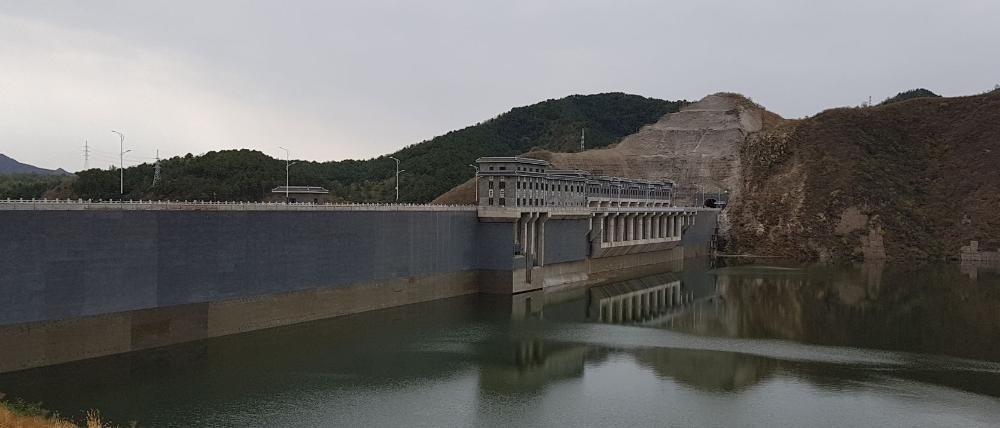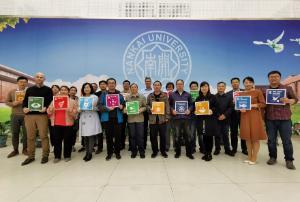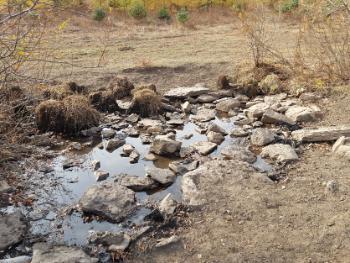River Basins: A new tool to aid sustainable development at sub-national levels
Published: 11 October 2022
A project focussed on the Luanhe river basin demonstrates how the approaches and solutions we develop for regional and national problems can be used to tackle global challenges.

In 2015, the United Nations set out an ambitious blueprint for peace and prosperity around the world designed around 17 Sustainable Development Goals (SDGs). The SDGs encompass all facets of development that apply to every country in the world, with each one accompanied by clear and measurable targets.
The SDGs are a roadmap to bring billions of people around the planet out of poverty and secure a prosperous future for everyone. While many countries are making great strides in achieving the SDG targets, there is a risk that development is not happening equitably at smaller scales.
The challenge of achieving equitable development at the sub-national scale was a key driver behind a project led by Prof Fabrice Renaud from UofG’s School of Interdisciplinary Studies. “River Basins as 'Living Laboratories' for Achieving Sustainable Development Goals across National and Sub-National Scales” brought together researchers from China, Japan, and the United Kingdom, and built on some aspects of the GCRF Living Deltas Hub. The Living Deltas Hub is working to understand the impact of climate change and economic development on river delta environments and the communities who live in them, with a particular focus on large deltas in south and southeast Asia. This River Basins project allowed the team to build on the broader sustainability issues of that project and explore how national policy can affect sub-national social-ecological systems in the Luanhe river basin in China.
Understanding the local context
 During their work on the project, the team began to understand the fragility of river basin environments and the development pressures placed on these systems. It became apparent that policies designed at a national level might have different impacts at the sub-national scale. Using the Luanhe river basin in China as a case study, the team set out to analyse the synergies and trade-offs that may occur when national policies do not consider impacts on sub-national environments and communities. Specifically, the project had four key objectives:
During their work on the project, the team began to understand the fragility of river basin environments and the development pressures placed on these systems. It became apparent that policies designed at a national level might have different impacts at the sub-national scale. Using the Luanhe river basin in China as a case study, the team set out to analyse the synergies and trade-offs that may occur when national policies do not consider impacts on sub-national environments and communities. Specifically, the project had four key objectives:
- Development of future land-use change scenarios for the Luanhe river basin through participatory engagement with different levels of stakeholders. This would help the team understand local dynamics and the trade-offs between different SDGs.
- Modelling the sediment budgets and flood risk and water quality for the different land use change scenarios to understand the potential for future flood risk and changes in water quality.
- Analysis of the ecosystem services and disservices for different land use change scenarios for the entire basin to understand how local perceptions are different across the basin.
- Extend the SDG Interlinkages Tool, developed by the Institute for Global Environmental Strategies, to operationalise it at the basin scale and visualise the synergies and trade-offs between the selected SDGs.
"There are many assessments of synergies and trade-offs between sustainable development goals that are done at the national level. We were interested in finding out how the synergies materialise at the sub-national scale. You may have a national level policy, for example, to reduce food insecurity and that policy will affect a huge country like China in different ways, and at the sub-national scale may be very beneficial in some areas, but it may be detrimental in other areas. We wanted to understand how this would play out in the sub-national scale to try to be innovative and fill a niche that wasn't really explored scientifically there." -Prof Fabrice Renaud.
Updated Tool to Aid National Policy
 The basin development and land use change scenarios that the team developed with a wide range of stakeholders highlighted many shifts already happening within the basin. Changes in hydrology, sediment transport, water quality, and ecosystem services were all identified through the stakeholder sessions, analysis of existing policies, and analysis of ecosystem data from the basin.
The basin development and land use change scenarios that the team developed with a wide range of stakeholders highlighted many shifts already happening within the basin. Changes in hydrology, sediment transport, water quality, and ecosystem services were all identified through the stakeholder sessions, analysis of existing policies, and analysis of ecosystem data from the basin.
The project team took the findings from the first stage to create a modified version of the SDG Interlinkages Tool which already existed for China at the national scale. This tool can be used to integrate decision-making across sectors as well as providing a rapid diagnosis as to where major trade-offs between SDGs will take place at the sub-national scale for given policies. For policy makers, this is a powerful tool that allows them to explore the impacts and outcomes that will result from different policies before they are implemented. Further details can be found in a series of papers that have been published by the project team in a special feature of the journal Sustainability Science.
An important legacy and a bright future
The project finished in 2021, and since then has built up an exciting legacy. Different groups of stakeholders have already directly benefited from the research through increased knowledge of how national policy can affect sub-national eco-systems and economies. In particular, the extended SDG Interlinkages tool is a very valuable tool for policy and decision-makers addressing development issues at all governance scales.
Students in China are also directly benefiting from the relationship between the University of Glasgow and Nankai University. A scholarship set up through the Chinese Scholarship Council is a direct consequence of the work done between the two institutions and each year students from China come to the University of Glasgow for their PhD study. According to Prof Renaud, “We have many different students from China that are coming on various programs that we have here, not just on the environment or environmental sciences, but also tourism.”
The legacy from the project can also be found in additional collaborations. Building on the knowledge generated by the project, particularly in terms of systems thinking, the University of Glasgow partnered with the Vietnam National University to investigate the impacts of the COVID-19 pandemic on social and ecological systems in northern Vietnam. These new collaborations highlight how the approaches and solutions we develop for regional and national problems can be used to tackle global challenges.
Funder Acknowledgement
We kindly acknowledge the ‘Towards a Sustainable Earth’ (TaSE) programme, and funding from UK Research and Innovation (UKRI) through the Natural Environment Research Council (NERC) (Grant no. NE/S012427/1), the Japan Science and Technology Agency (JST), Japan (Grant no. 18077754) and the National Natural Science Foundation of China (NSFC Grant nos. 41911530081 and 52170165), China.
First published: 11 October 2022
UofG - School of Social & Environmental Sustanabilty
UofG - School of Geographical & Earth Sciences
Partner Organisations
Institute for Global Environmental Strategies (IGES)
Learn More

